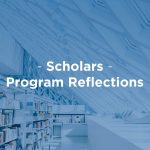What American Cities Can Learn From Toronto’s Success
Last month, representatives from four NLC member cities — Columbus, Ohio, Richmond, Virginia, Salt Lake City, and Tucson, Arizona — traveled to Toronto, Ontario for a study tour.
With a population of 2,800,000, Toronto is North America’s fourth-largest city — and the community is working to cope with explosive growth (fueled in part by immigration), catch up on decades of under-investment in infrastructure, and preserve its enviable quality of life.
The city officials who joined the tour, including Richmond Mayor Levar Stoney and City Councilmember Cynthia Newbille, are members of the 2017-2018 Daniel Rose Land Use Fellowship class, an annual program now in its ninth year that provides professional development and technical assistance on a local urban development challenge to a cohort of teams from four large U.S. cities.
The fellowship is operated by the Rose Center for Public Leadership—a program of NLC in partnership with the Urban Land Institute.
Staff and members of the ULI Toronto District Council gave the fellows a tour of Old Toronto to showcase the successful redevelopment of the St. Lawrence neighborhood (home to one of the world’s best and oldest public markets), conversion of the athletes’ village for the 2015 Pan-American Games into the Canary District development, and restoration of the historic 13-acre area Distillery District, one of the largest collections of Victorian-era industrial architecture in North America, into a beloved arts and cultural district featuring one of the best Christmas markets in North America.
The fellows also met with staff from Toronto’s City Planning Division, regional transit agency Metrolinx, and the Ontario Growth Secretariat to learn how they coordinate on planning.
The fellows toured several inspiring new development projects including Regent Park, a 69-acre public housing redevelopment with a focus on arts and public programming that has transformed its surrounding neighborhood without displacing its residents; the South Core, an extension of the city’s Financial Core that bridges the barriers of a railyard and an elevated expressway; and The Well (model pictured at top), a 7.5-acre mixed-use retail anchor with 2 million square feet of planned development that will sensitively transition the density of the Financial Core with a historic residential neighborhood.
And they met with community leaders trying to keep housing affordable and support a long tradition of immigrant entrepreneurship in the Kensington Market neighborhood, which is one of the most diverse in North America and an important gateway for immigrants. The fellows got around in the sub-freezing temperatures the Toronto way, using the city’s 20-mile underground PATH network and its extensive streetcar system, which features short headways and travel-lane priority over automobiles.
These examples of innovation and best practices in urban development will serve to inspire the fellows finding solutions to their selected land use challenges in the program. As architect Jane Lin, a founding partner of Urban Field Studio in San Francisco who is serving as an adviser to the Tucson team, noted, “A theme throughout multiple places we saw was mixed uses and mixed income make for better and more complete communities. A well-crafted vision or big idea can go a long way. And, it can be really simple. Communication of that big vision is really key to getting something great to happen.”
Over the next two weeks, CitiesSpeak will feature in-depth insights of the Toronto study tour from two of the Rose Center land use fellows. Stay tuned to learn more!



